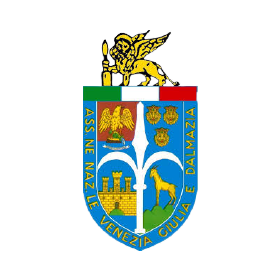Slovenia marked the end of its semester of European presidency in grand style, with a declaration of intent which we simply cannot allow to pass by in silence, and which forces us to take into consideration issues that we thought by now to have been relinquished to the past. Once again it is History that finds itself under fire, a History that doesn’t need to be “shared” but that must be respectful of memories.
In its statement issued at the end of its recently-ended European Union presidency (from January 2008 to June 2008) the Slovenian government published, on its website, a detailed report on what was carried out during this period. A separate chapter was devoted to the Regions Committee, and contained a brief synopsis of the history of Slovenia. At this point we must underline two enormous and knowingly-made errors: in 1918, at the end of the First World War, the following is stated: “the First World War. After the break-up of the Austro-Hungarian Empire, Slovenia’s ethnic territory was divided amongst Austria, Italy, Hungary, and the Kingdom of Serbs, Croats and Slovenes.” Even if, chronologically and institutionally, no objections can be made here, the government of Slovenia wants to underline a certain ethnic connotation and make it emerge. There follows a false interpretation in the evidence referring to September 15th, 1947. The site tells us that “Most of the coastal region of the Littoral was reunified with Slovenia after the Paris Peace Treaty.”
Now, Slovenia, in 1947, was a Yugoslav republic, and didn’t have an institutional, international independence of its own: it is well-known that the territories of the Littoral became part of Yugoslavia, and part of the Yugoslav Republic of Slovenia, only in 1975 with the signing of the Osimo Treaty. Before 1975, it was the so-called “B Zone” under Yugoslav administration, but the site conveniently skips over this important aspect. The ethnic matter cannot be considered with indifference, when we remember that in those plural territories, there lived another people as well: the Italian people, who were an integral part of those areas for centuries. In certain areas, such as Capodistria, Isola and Pirano, the Italians made up the vast majority of the population, in censuses carried out by Austria and, indeed, all the way up to 1954, when there was a mass exodus of Italians from those areas. In this context, a serious reader begins to wonder if Slovenia wants to reopen the discussion of, or completely remove, documented facts such as the Exodus and the foibe. In fact, if the coast of Istria comes to be considered “ethnic Slovenian territory”, as the website’s documents state, then the Italians of those areas automatically are considered “occupiers” or “immigrants”, and this places a sort of justification over the foibe and other abuses, causing them to be seen in a very different light.
To sum up the matter, it is “unpleasant” when one forgets the presence of others. But when those “others” are a native majority of people, then “unpleasant” becomes “disturbing”, indeed. This is the case of the Istrian coast, as recently stated by Paolo Segatti, a journalist for “Il Piccolo”, the Trieste daily: “…it is disconcerting that a government of the Union country would pretend to forget the complex legal steps that governed the transfer of sovereignty from Italy to Yugoslavia of Capodistria, Pirano and Isola. It is a way of creating national history that is too ‘quick’, à la Soviet Union. Plus, if we are documenting facts, in 1947 ‘most of the littoral’ was not “re-unified with Slovenia”, because before the Second World War Slovenia was not an entity with its own political or administrative boundaries, nor was it so before the First World War. The sentence makes sense only if taken to mean a Slovenian ethnic territory.”
Further on in the same issue of Il Piccolo, we find an article by Mauro Manzin, who reflects on the same theme: “It is not to be forgotten that, specifically to avoid these ‘slides’, a commission was established of both Italian and Slovene historians. After years of tortuous labor, this commission was able to publish a common declaration on a shared history of these regions. In that document, it is certain that errors of the type found on the website are not to be seen. Let us not forget that, although it is summer, Slovenia is in the midst of a political campaign, with elections to be held on September 21st. and that the center-right government is losing, according to the latest polls made by the center-left coalition led by the young and enterprising Borut Pahor. But elections aren’t justification for such a distortion of history. Actually, a slide of this magnitude puts Slovenia at risk of being counterproductive, if only for the lack of appeal it creates for itself amongst the other countries of the European Union, after having had the presidency for 6 months.”
Thus, at the end of a period that, for other matters can be considered fruitful, regarding its role as semester leader of the European Union, Slovenia leaves the presidency having created a climate that is certainly not positive. This climate clashes against the heights gained by those in favor of the European Union, those who have contributed to its strong base values of pacification and respect for the many memories which make up the Union itself.
The Federation of Exiles of Istria, Fiume and Dalmatia has sent a communication regarding this issue to Franco Frattini, the Minister of Foreign Affairs, to draw his attention to the more incorrect passages of the Slovenian website document.
Renzo Codarin
President of the Federation of the Associations
of Exiles of Istria, Fiume and Dalmatia




